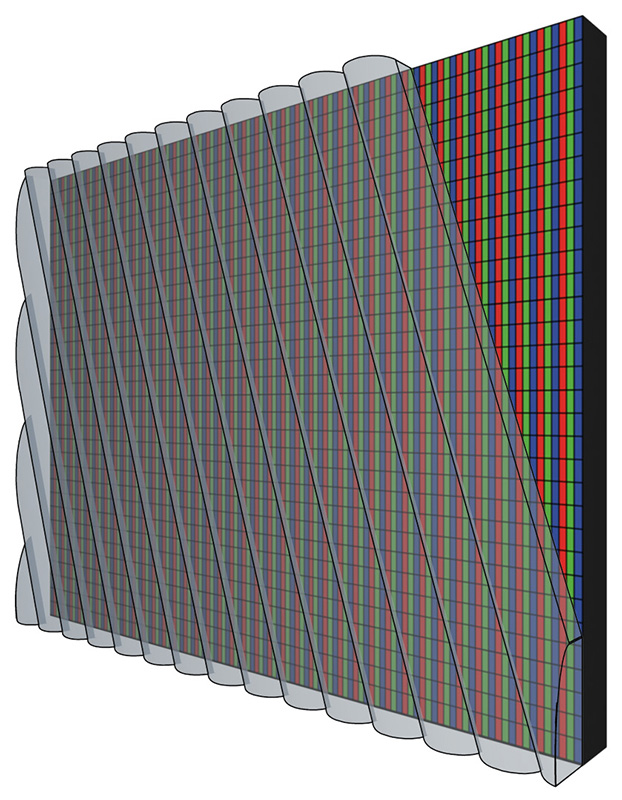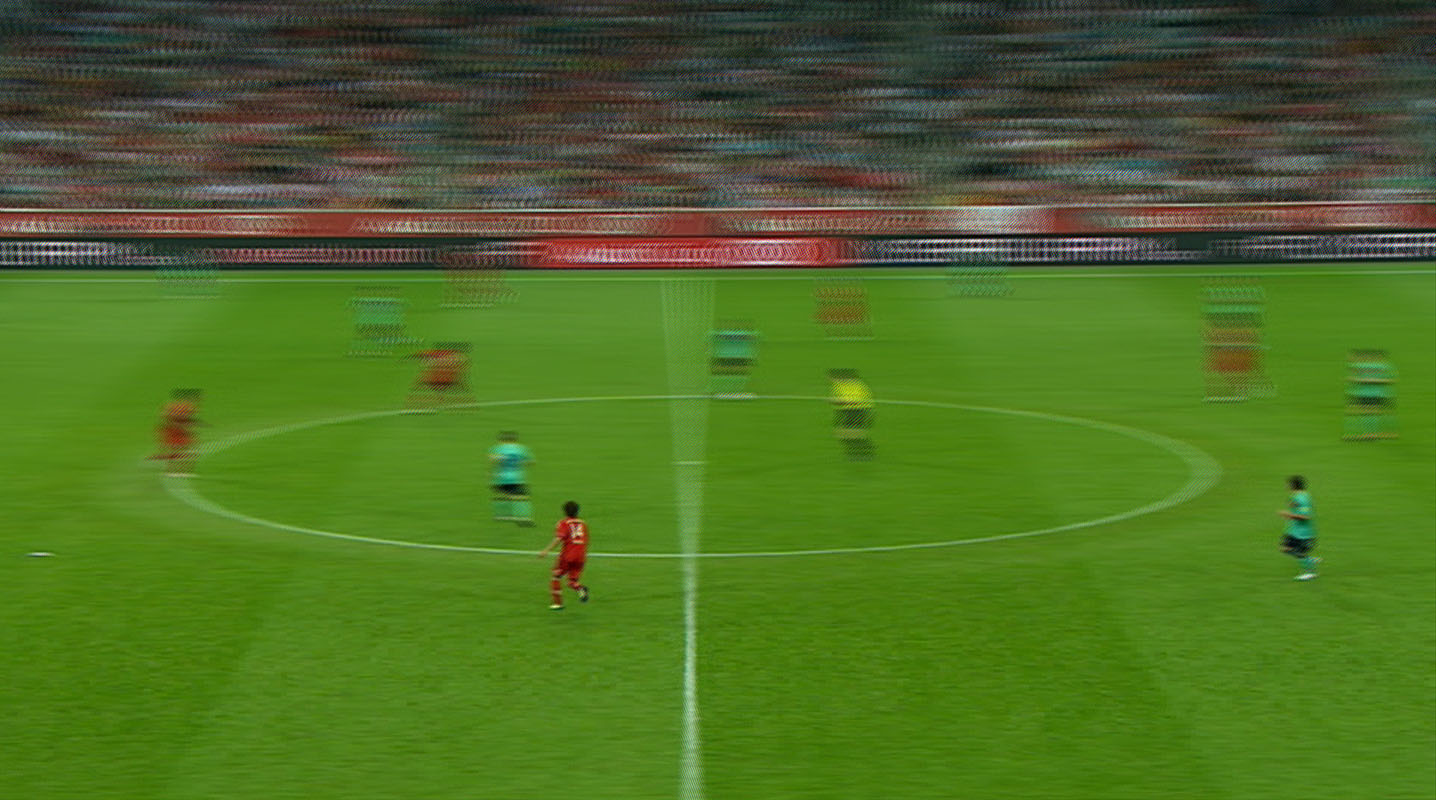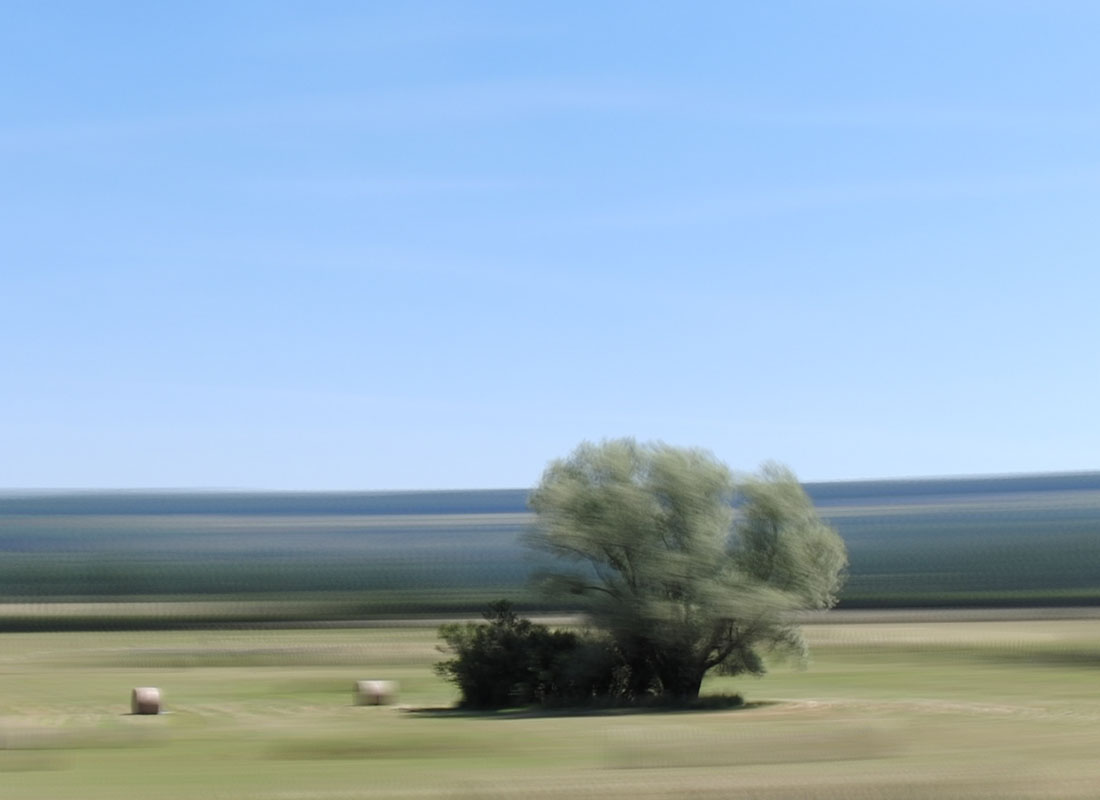How does the Technology work?
Multi-viewer monitors
Alioscopy glasses-free 3D monitors, also known as autostereoscopic displays, offer an immersive viewing experience to multiple viewers simultaneously. Light emitted from each RGB sub-pixel of the LCD panel is refracted in different directions through an array of precisely engineered cylindrical lenses, which are optically bonded to the surface of the panel. Each eye perceives a distinct image and binoculor fusion in the brain creates the 3D sensation.
Off-the-shelf monitors or specially commissioned by Alioscopy are retrofitted by bonding lenticular lens arrays onto the panel. These ultra-high-precision optics are manufactured in-house in Paris on proprietary machinery, with extremely high accuracy. Their optical specifications are carefully engineered to align with specific viewing conditions, the pixel pitch of each monitor and the desired number of viewpoints.

Alioscopy lenticular lens array
Content is more elaborate than traditional stereoscopy, which requires only two images, one for each eye. An autostereoscopic image embeds n distinct perspectives that together form n-1 stereo pairs. These perspectives are then merged into a single Alioscopy image using proprietary algorithms, which may vary depending on the display model.

Alioscopy mixed image (8-views).
In a mixed image displayed on a standard 2D screen, the greater the disparity, the blurrier it appears. On an Alioscopy monitor, however, this perceived blur transforms into captivating depth and striking pop-out effects, while sharp areas remain anchored on the screen plane.
The gradual splitting of the central line in this image illustrates perfectly the growing disparity. If it looks blurry, it will display in 3D.
Single-viewer monitors
Alioscopy monitors can also be designed for single-viewer applications by incorporating eye-tracking technology. Instead of passively projecting multiple successive stereo pairs, these monitors actively project only one stereo pair precisely matching the viewer’s eye position. Eye-tracking accurately detects each pupil's location, enabling the display to adapt content dynamically to deliver the correct image to each eye.
Alioscopy’s advanced patented tracking solution effectively eliminates crosstalk and significantly enhances the sense of immersion. For example, the Portal can create stunning effects where objects appear to float within reach, while distant backgrounds maintain their true physical depth, pushing the boundaries of 3D visualization.

Alioscopy 3D4K 13.3” with eye-tracking
Content

Alioscopy 60-view image

Stereoscopic pair
